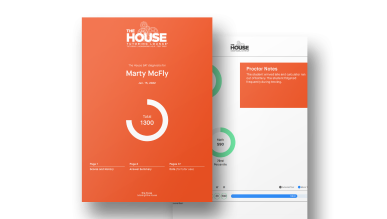Everything You Need to Know About the
Secondary School Admission Test (SSAT)
Guiding your student through the private school admission process can be a challenging job, especially when it comes to standardized testing. One of the most widely recognized tests for private and independent school admissions is the Secondary School Admission Test (SSAT). Here’s an overview to help you understand what the SSAT is, its structure, and how you can best support your student in preparing for it.

Does your student need help preparing for the SSAT?
Ace your SSAT with Chicago's Award Winning Test Prep

Understanding the SSAT
The SSAT is a standardized test used by many private and independent schools to assess the academic abilities of prospective students. It is designed to assess the basic verbal, math, and reading skills that students develop over time, rather than focusing on specific subject knowledge. The SSAT is offered in paper form or virtually, and is administered in Prometric test centers, private schools, and even at home.

Completing the SSAT
The SSAT is structured to assess your student’s verbal, math, and reading comprehension skills, which is essential for private school admissions. For Middle and Upper Levels (grades 5-11), the test includes a Quantitative section with 50 math questions, a Verbal section with 60 questions on synonyms and analogies, a Reading Comprehension section with 40 questions based on passages, an unscored Experimental section, and a Writing Sample that requires a short essay. For Elementary Level (grades 3-4), the test comprises 30 questions each in Math, Verbal, and Reading Comprehension, along with a brief essay. The Middle and Upper-Level test lasts about 3 hours, while the Elementary Level test is approximately 2 hours–it the exam is ‘virtually unspeeded,’ according to the official SSAT website.
.jpg?width=1600&height=1062&name=chart%20(1).jpg)
Scoring the SSAT
Scoring on the SSAT vary by level. In addition to raw scores, all student will receive a percentile ranking that compares their performance to that of the other test-takers in the same grade. The writing sample is unscored, but it is an important component to the overall application package. Elementary Level scores range from 300 to 600 for each section. Middle and Upper-Level scores range from 500 to 800 for each section.
Testing Frequency and Registration
The SSAT is offered monthly from October through June during the 2024-2025 school year. This provides flexibility for students to choose a convenient test date. Registration is done online through the SSAT official website, where you can also find detailed information about test dates, locations, and fees. Early registration is recommended to secure a preferred test date and location. The SSAT is typically offered on several dates throughout the year. The upcoming test dates are:
| October | 12, 2024 |
|---|---|
| November | 9, 2024 |
| December | 7, 2024 |
| January | 10, 2025 |
| February | 7, 2025 |
| March | 8, 2025 |
| April | 12, 2025 |
| May | 10, 2025 |
| June | 7, 2025 |
Verify these dates on the official SSAT website for the most accurate and up-to-date information.
Visit The House’s Excel Spreadsheet of helpful information about Chicago’s private schools, registration deadlines, and required exams here.

Raising Your Score
The best way to prepare for the SSAT–and any standardized exam–is to understand the test format, create a study plan, practice regularly, focus on weak areas, and learn test strategies. Experts at The House know this exam and will help your student get organized and plan for success. From developing an approach specific to the needs of your student to teaching exam techniques specific to the SSAT, The House has you covered. Reach out to learn more: The House Tutoring Lounge

Five Quick Facts About the SSAT…
- …available monthly from October to June.
- …offered at the elementary (grades 3-4), middle (grades 5-7), and upper (8-11) levels.
- …comprised of quantitative (math), verbal, reading comprehension, and an unscored writing sample; the upper-level grade exam also includes an experimental section.
- …scored from 300-600 for each section of the elementary level exam, and 500-800 for each section of the middle and upper-level exams.
